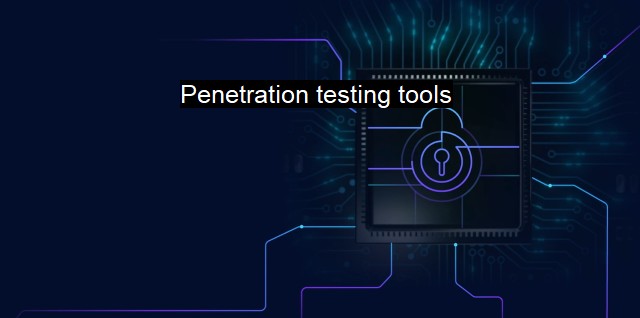What are Penetration testing tools?
Uncovering Vulnerabilities: The Importance of Penetration Testing Tools in Cybersecurity
Penetration testing tools, commonly referred to as "pen testing" tools, are software applications used by cybersecurity professionals to inspect and fortify networks, systems, or applications against imminent vulnerability and threats. These tools emulate actual attacks on a system, offering an opportunity for organizations to assess their defensive measures' efficiency and robustness. Taking an active role in preemptively discerning any vulnerabilities, penetration testing tools are integral to maintaining a high level of security in the quickly evolving realm of cybersecurity.This kind of tools range from simple singular-purpose utility like password crackers, to complex frameworks with diverse functionality. Given the diverse and ever-growing range of cybersecurity threats, an equally varied selection of pen testing tools have been developed to counter these threats. network mappers visualize system network’s architecture and illustrate where opportunities for intrusion may be present. Wi-Fi crackers methodically guess Wi-Fi passwords to test the security of a wireless network.
One application of penetration testing tools is in webservers and their security paradigms. Recognizing possible holes and securing them can help to thwart potential attacks. Those are, but not themselves antivirus tools, help to identify security issues that antispyware and antivirus software might be unable to handle. In the same vein, but more complex, vulnerability scanners are designed to inspect entire systems, looking for areas where weaknesses are evident and potential breach points exist, evaluating these areas from a risk perspective.
One essential aspect of cybersecurity is staying ahead of potential attackers. This idea is likely most visible in areas such as scripting tools. Security professionals create exploitative scripts similar to those that might be utilized by criminal attackers. Protocols, passwords, code- injections, API's, etc., are all possible targets for these sophisticated scripts.
These tools provide an invaluable means of visualizing your network from the point of view of a potential attacker, illuminating vulnerabilities and weak spots. They prompt a significant strengthening of security measures because they force IT and security teams to understand the attacker's perspective and design defenses accordingly.
While penetration testing tools are vital to maintaining a comprehensive cybersecurity structure, they need to be used carefully. The simulated attacks can, if mismanaged, result in downtime or unintended effects that may temporarily disable system services that are vital for organization functioning. Despite these risks, if properly controlled and supervised, pen testing utilizes system vulnerabilities in a controlled environment and turns them into a significant advantage for understanding the weak points in the system architecture.
It's important to note that any tool is only as good as the person or team using it. The best penetration testing tool on the market would be largely ineffective without a skilled cybersecurity analyst who understands how to interpret and act on the results it provides. Conversely, even a basic tool can be highly effective if the cybersecurity team is knowledgeable and experienced.
Antivirus software is the most well-known cybersecurity tool, but it is not the be-all and end-all of cybersecurity protection. Antivirus software certainly plays a crucial role, but it's important to remember that it primarily prevents, detects, and removes malware. Although related, malware and cybersecurity threats aren't the same thing. Cybersecurity threats can include situations where sensitive information is unencrypted and, therefore, susceptible to interception.
Penetration testing tools present a proactive approach enabling organization to stay one step ahead in cybersecurity architecture. From permitting the detection of vulnerabilities to facilitating the continual improvement and fortification of organizations' security standards, pen testing is an invaluable tool in cybersecurity and beyond antivirus coverage.

Penetration testing tools FAQs
What are penetration testing tools and why are they important in cybersecurity?
Penetration testing tools are software applications that simulate real-world attacks on a computer system to identify vulnerabilities and assess its overall security posture. They are important in cybersecurity because they help identify vulnerabilities before criminals can exploit them.What are some popular penetration testing tools?
Some popular penetration testing tools include Metasploit, Nmap, Nessus, Burp Suite, and Wireshark.Are penetration testing tools legal?
Yes, penetration testing tools are legal as long as they are used for ethical and legal purposes with the consent of the system owner. Unauthorized use of these tools can lead to legal consequences.How do penetration testing tools differ from antivirus software?
Penetration testing tools are designed to identify vulnerabilities in a system by simulating attacks, while antivirus software is designed to detect and remove malicious software from a system. Penetration testing tools are proactive in identifying vulnerabilities, while antivirus software is reactive in response to existing threats.| | A | | | B | | | C | | | D | | | E | | | F | | | G | | | H | | | I | | | J | | | K | | | L | | | M | |
| | N | | | O | | | P | | | Q | | | R | | | S | | | T | | | U | | | V | | | W | | | X | | | Y | | | Z | |
| | 1 | | | 2 | | | 3 | | | 4 | | | 7 | | | 8 | | |||||||